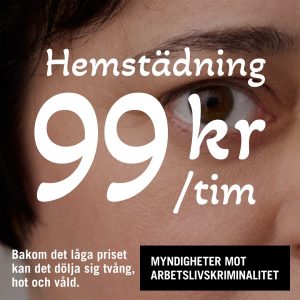The ruling caused a stir.
According to the EU Pregnant Workers Directive, pregnant employees who are not permitted to work because of risks to their own or their child’s health and safety are entitled to “maintenance of payment and/or entitlement to an adequate allowance” during that period.
Read the article in Swedish on Arbeidsliv i Norden
In Sweden, this compensation is provided through the so-called pregnancy benefit, paid by the Swedish Social Insurance Agency.
Or at least, that was the case until August this year, when AD’s ruling was issued.
The two women involved in the case discovered that their pregnancy benefit was lower than the salary deduction made by their employer. And this was not just a small amount of money: 46,722 and 55,410 Swedish kronor (€4,030 and €4,780) less than they would have earned if they had been at work. Their trade union argued that this was not in line with the EU directive and helped them take the case to court.
What makes the ruling so remarkable is that the employers had simply followed Swedish law – but that was not enough. AD agreed with the two women that the Swedish Social Insurance Code, which governs how pregnancy benefit is calculated, does not meet the requirements of the EU Pregnant Workers Directive.
The court therefore based its decision directly on the directive itself and on how the Court of Justice of the European Union (CJEU) has interpreted it.
As early as 2010, the CJEU had ruled that “maintained pay or adequate allowance” must at least cover the worker’s basic salary and any supplements linked to her position, which the women had not received. The Labour Court therefore ordered the two municipalities to pay the difference between the pregnancy benefit and the salary deductions.
The ruling has implications far beyond the employees directly involved. Since the women were employed by municipalities (which form part of the state), they could direct their claims straight at their employers. Other public-sector employers are now likely to face similar demands.
Employees in the private sector may instead seek damages from the state, arguing that Sweden has failed to properly implement the directive. Lawmakers in Sweden will now need to consider whether the compensation rules should be amended.





